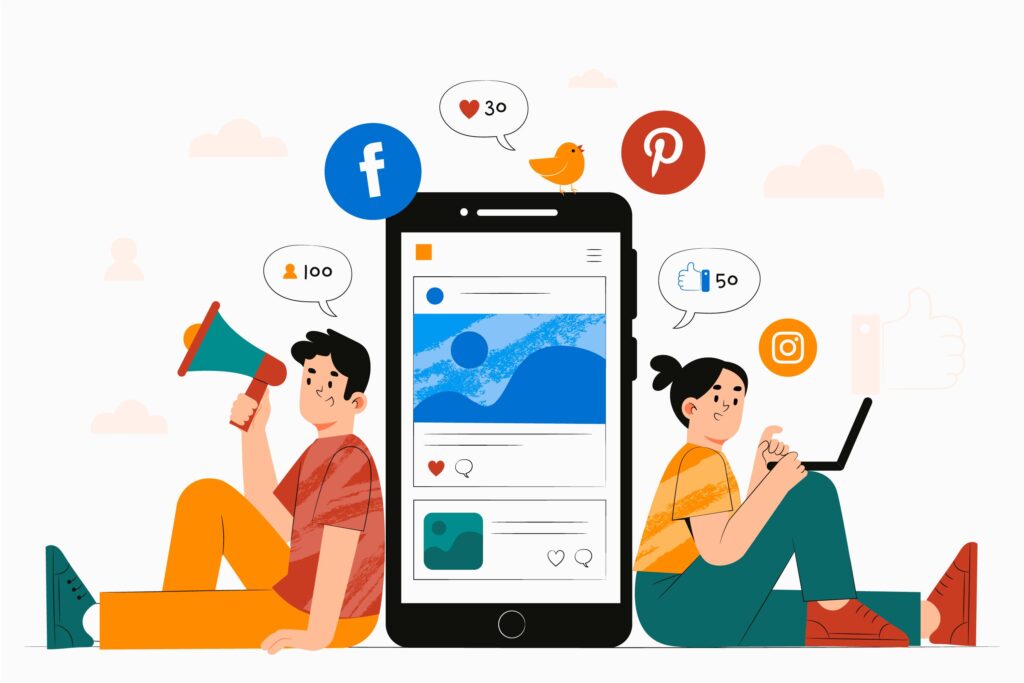The Future of Social Media Advertising: Emerging Platforms and Strategies

The age of social media marketing is here. What was once a nice-to-have has become a commonplace marketing strategy. In reality, social media is currently used by more than half of humanity. Furthermore, since the COVID-19 pandemic has made it difficult for people to socialise, more people than ever are using social media to remain in contact with relatives and close friends.
This article will look at the most recent social media marketing trends and how they will affect how businesses engage with (and market to) their target audiences.
What does social media marketing hold for the future?
There are now several apps available for social media, in addition to static ads and newsfeeds. New technologies have rendered it possible for customers and brands to interact via a variety of channels:
- Video Content
Because videos give advertisers a method to connect customers with dynamic information that may stand out while all the typical static content that people have viewed for decades, Video advertisements have a 7.5x higher click-through rate than visual ads.
Consumer engagement tactics for video content are advancing quickly. TikTok, for example, is well recognised for its brief, amateurish movies, which are popular amongst younger users. Millions of flicks from every conceivable type of business are available on other platforms, such as Instagram and YouTube.
Understanding how video trends are shifting and how your content may change to match the demands of your different target groups is crucial for marketers looking to engage prospects.
- Artificial intelligence
Marketers use artificial intelligence (AI) to enable machines to make decisions that are comparable to the ones made by humans without direct human intervention. This technology makes it achievable to give customised, tailored information that is not possible with conventional marketing strategies.
For instance, chatbots let marketers “talk” to customers about their goods or services without having to hire a sizable human sales force. Chatbots are used for accepting and handling orders, offering personalised promotions, and responding to general brand queries.
This strategy replicates the experience of a typical in-store salesperson online. When done effectively, consumers can contact a company at any hour of the day and feel like they are communicating with a real person.
- Micro-influencers and influencers
On Instagram, there are currently over 500,000 influencers. Influencers are individuals who have a significant number of followers on social media, typically on Instagram and are often connected with a specialised niche.
Social media influencers enable marketers to get their businesses in front of consumers via sponsored content, in which a brand operates with or rewards an influencer to discuss or endorse a service or good.
Approximately 81% of Instagram’s influencers are so-called “micro-influencers.” Influencers with 15,000 to 100,000 followers are featured. They frequently have incredibly active audiences yet are usually overlooked by larger businesses, making them cost-effective.
- Stories
Stories is an Instagram and Facebook feature, similar to Snapchat, in which users publish short videos for their friends and followers to view. With over 500 million daily users, Stories has well eclipsed Snapchat popularity.
Instagram/Facebook Stories allow you to capture people’s attention at a time when they might not have seen your brand otherwise.
If your company already has followers on Instagram, you may offer information about your brand by posting your own Stories. You may also run paid adverts in-between clips while people view them. Both are effective methods for capturing the attention of this vast user base.
- Messaging
We’ve already discussed employing AI chatbots to interact with customers, but there are a variety of additional methods that customers may wish to communicate directly with an organisation via direct messaging platforms.
For example, Instagram direct messaging (DM) allows customers to contact brands to learn about their goods or services. Having someone available to answer to people and participate in their hobbies might be a high-value strategy to attract interested customers.
It may appear intimidating to manage all of these multiple channels of communication with a tiny sales and support team.
Fortunately, technologies like Zendesk help aggregate and organise various channels, allowing you to swiftly switch between platforms and ensuring consumers receive a response.
- Augmented Reality
The use of computers and indicators to layer digital experiences on top of the actual environment is known as augmented reality (AR). The primary AR system has yet successfully taken off at scale, but companies like Oculus are demonstrating the possibilities for companies and marketers.
For example, if a customer wore a headset while strolling down the street, a local bar or restaurant might feed them promotional information as they passed by the real location.
In the short term, certain smartphones contain functionality that enables technical developers to layer digital data atop the live camera. Ikea allows customers to use this option to browse their products from the ease of their own homes. This technology should become more widely available in the future years.
- Customer Service
While new technology is exciting, don’t overlook traditional customer service. Clients will always have requests that only a human being can answer.
In today’s internet environment, consumers demand to be responded to on whatever medium they’re using, so brands must be ready to communicate via everything from conventional phone calls to direct messages on Instagram to emails.
Conclusion
Social media is a vital component of any marketing strategy. Technologies like live video, augmented reality, and chatbots powered by AI are changing the face of social media marketing. Employee advocacy and influencer marketing can also assist you strengthen your marketing approach.
It is critical to be as forthcoming as possible in order to create consumer trust. With the proliferation of messaging applications, advertising on them may become a viable option in the near future.
Which trend do you believe will have the most impact on the future of social media marketing? Tell us in the comments.


